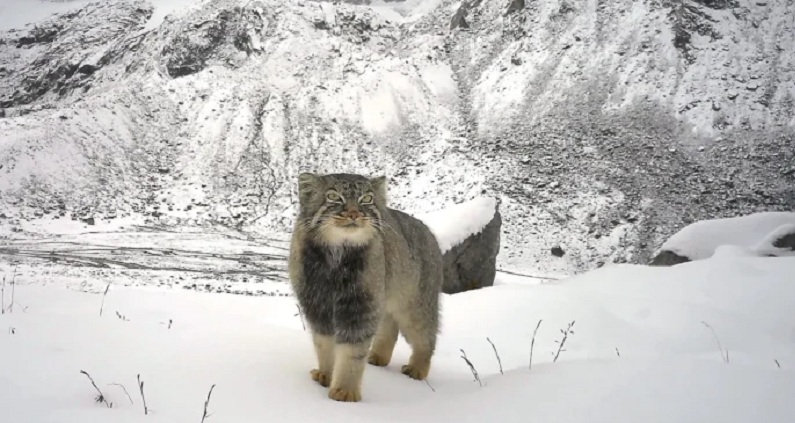Itanagar: A landmark wildlife survey conducted in Arunachal Pradesh has revealed a series of rare and significant discoveries, including the first-ever photographic evidence of the elusive Pallas’s cat in the state.
The survey, conducted by WWF-India in association with the Forest Department of the Arunachal Pradesh government, also recorded the presence of other wild cats – snow leopard, common leopard, clouded leopard and marbled cat – above 4,200 metres, indicating the landscape’s unique wild cat diversity.
The survey was conducted in 2024 under its project “Reviving Trans-Himalayan Rangelands – A Community-led Vision for People and Nature”, which was funded by the UK Government through the Darwin Initiative.
The WWF-India team was led by Rohan Pandit, Taku Sai, Nisam Luxom and Pemba Tsering Romo, under the guidance of Rishi Kumar Sharma, head for science and conservation, Himalayas programme, WWF-India.
“The discovery of Pallas’s cat in Arunachal Pradesh at nearly 5,000 metres is a powerful reminder of how little we still know about life in the high Himalayas,” said Rishi Kumar Sharma.
Pallas’s cat is one of the most elusive and rarely photographed wild cats, and remains one of the least studied feline species. Its documentation in Arunachal Pradesh extends the known distribution of the species in the eastern Himalaya, adding to earlier confirmed records from Sikkim, Bhutan, and eastern Nepal.
Though WWF-India conducted the survey during July-Sept last year, its findings were released only recently. The organisation claimed to have deployed 136 camera traps in 83 locations across 2,000 sq km of rugged high-altitude rangelands in West Kameng and Tawang districts, making it one of the most extensive wildlife monitoring exercises.
Besides getting photographic record of Pallas’s cat, the survey documented the highest elevation records for common leopard at 4,600 metres above sea level (masl), clouded leopard at 4,650 masl, marbled cat at 4,326 masl, Himalayan wood owl at 4,194 masl and grey-headed flying squirrel at 4,506 masl.
The survey required meticulous planning and days of trekking through remote, high-altitude regions. The team faced extreme weather, rugged terrain, logistical hurdles, and limited accessibility. To overcome these challenges, the team partnered with local guides and community members. The camera traps were kept active for over eight months, often in extreme weather and remote, difficult-to-access terrain.
The elevation records documented for the common leopard, clouded leopard, marbled cat, Himalayan wood owl, and grey-headed flying squirrel were the highest in India to date and may exceed previously known global elevation limits.
“The discovery of Pallas’s cat in Arunachal Pradesh is a milestone for wildlife research in the eastern Himalayas. These findings reaffirm the state’s importance as a global biodiversity hotspot and highlight the need for continued investment in scientific monitoring and conservation,” said Ngilyang Tam, the state’s principal chief conservator of forests and chief wildlife warden (wildlife and biodiversity).















